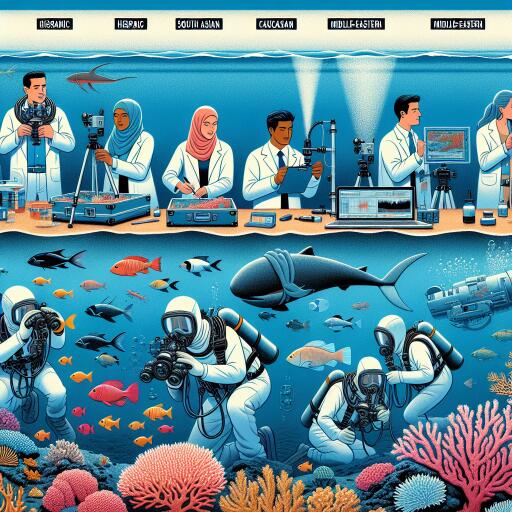
How Saudi Arabia champions cutting-edge research into unique Red Sea
In a landmark shift towards its marine ecosystem research, Saudi Arabia is unveiling the hidden mysteries of its vast aquatic realms, particularly focusing on the Red Sea’s untouched and bewildering aspects. Embarking on an explorative journey, the nation has recently unearthed a series of deep underwater marvels along its southern Red Sea coastline, known as “blue holes.” These spectacular geological formations, celebrated for their striking hues and ecological significance, spotlight the Kingdom’s commitment to marine biodiversity and conservation efforts.
The National Center for Wildlife (NCW), under Saudi Arabia’s visionary leadership, has spearheaded this initiative, revealing twenty blue holes in the first year of a decade-long research odyssey. The unparalleled beauty and ecological value of these underwater sinkholes draw both scientists and diving enthusiasts worldwide, eager to delve into their vibrant marine life and enigmatic presence.
Mohammad Qurban, at the helm of the NCW, highlighted these efforts as a groundbreaking stride in marine exploration, achieved in collaboration with the King Abdullah University of Science and Technology (KAUST) through the ambitious “Exploring the Wonders of the Red Sea: A Decade Expedition.” This initiative employs a suite of advanced methodologies, including scientific diving, remote sensing, and unmanned underwater vehicles to thoroughly map and investigate the blue holes’ diverse attributes.
Leading the expedition, Carlos Duarte, a renowned marine scientist from KAUST, shared insights into the intriguing landscape of the Red Sea. He recounted the discovery of these unique formations in an area notorious for its complex coral reefs, stretching from Jazan to Al-Lith. Despite previous explorations, the lack of proper underwater mapping tools had left these geographical wonders unnoticed until now.
The ongoing research has identified two primary types of blue holes: “blue rings” and “sunken lagoons.” Blue rings ascend from the ocean’s depths, sporting a coral ring that flourishes right up to the water’s surface, while sunken lagoons represent collapsed carbonate platforms, plunging as deep as 700 meters or more. This distinction opens new avenues for understanding the geomorphological processes shaping these habitats.
The utility of advanced technology in this endeavor has been paramount. Duarte explained how a combination of submersible crafts, deep-water robots, and sequencing technologies were instrumental in providing a glimpse into these hidden worlds. The data and samples collected not only promise to enhance our geological and marine biological knowledge but also support the conservation of these ecological treasures.
Significantly, blue holes stand as critical sanctuaries for numerous endangered marine species. Observations made during the expedition indicate that these sinkholes serve as crucial nursery grounds for marine mammals, among other uses. Such findings underscore the importance of these habitats, not only for their biological wealth but also for their function in supporting vulnerable marine life.
With the ambitious goal to map and protect these extraordinary underwater phenomena, Duarte and his team underline the critical need for further exploration and conservation efforts. In line with the Kingdom’s Vision 2030 and the Saudi Green Initiative, these endeavors align perfectly with broader environmental conservation and sustainability objectives. The NCW is actively working towards safeguarding 30% of the Red Sea waters by 2030, pursuing a comprehensive strategy to ensure the well-being of blue holes and their surrounding ecosystems.
As Saudi Arabia continues to unveil the secrets of the Red Sea, the discovery of blue holes marks just the beginning of an extensive marine exploration journey. These formations, long overlooked, are now recognized as pivotal to our understanding of marine ecosystems, harboring potential for groundbreaking scientific discoveries and conservation successes in the years ahead.





Leave a Reply